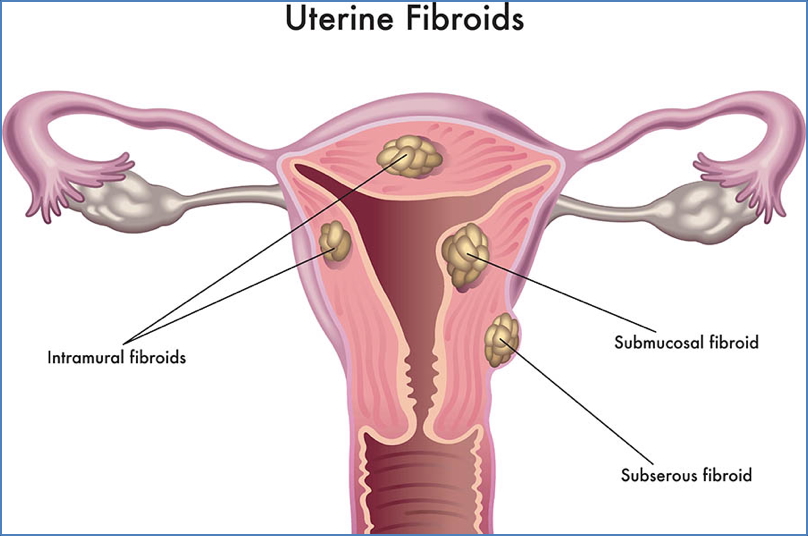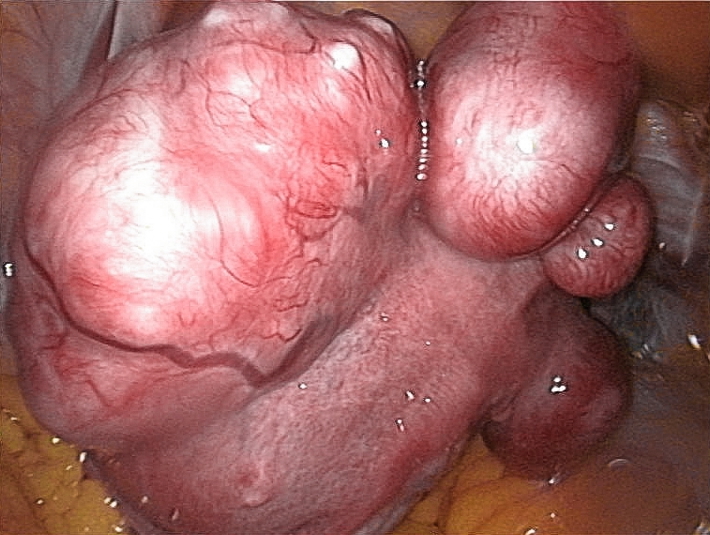Table of Contents
Overview – Uterine Fibroids
Uterine fibroids, also known as leiomyomas or fibromyomas, are benign smooth muscle tumours of the uterus. They are common in women of reproductive and perimenopausal age, often presenting with heavy menstrual bleeding (menorrhagia), pelvic pressure symptoms, or infertility. Their growth is oestrogen-dependent, making them highly responsive to hormonal fluctuations such as pregnancy and menopause.
Definition
Uterine fibroids are benign tumours of the uterine smooth muscle (myometrium). They may be solitary or, more commonly, multiple nodules of variable size and location.
Aetiology
- Likely multifactorial, but with a key dependence on oestrogen
- Explains:
- Growth acceleration during pregnancy
- Regression post-menopause
- Explains:
Pathogenesis
- Hyperplasia or tumourigenesis of myometrial smooth muscle cells
- Subsequent enlargement driven by oestrogen stimulation
- No malignant potential, but size and location can significantly impact clinical presentation

Morphology
Macroscopic
- Round, well-circumscribed, white/tan solid nodules
- Range in size from microscopic to massive (e.g. grapefruit-sized)
- Typically multiple fibroids present
Microscopic
- Whorled bundles of uniform spindle-shaped smooth muscle cells
- Cigar-shaped nuclei
- Well-demarcated margins (though not encapsulated)

Clinical Features
Epidemiology
- Affects <30% of women, often undiagnosed if asymptomatic
- Most common in perimenopausal women
Symptoms
- Asymptomatic if small
- Menorrhagia (long, heavy periods lasting 8–14 days)
- Dyspareunia (pain during intercourse)
- Pelvic pressure symptoms:
- Bloating
- Heaviness
- Abdominal mass
- Constipation
- Urinary frequency/urgency due to compression on bladder
Investigations
- Transvaginal ultrasound – First-line imaging
- Bimanual pelvic examination – May detect large fibroids
- Consider MRI or hysteroscopy in complex cases
Management
Medical
- Hormonal suppression (e.g. progesterone agents, GnRH analogues) – May reduce size or control symptoms
- Iron supplementation if anaemia from blood loss
Surgical
- Myomectomy – For women desiring fertility
- Hysterectomy – Definitive treatment for symptomatic or large fibroids
- Uterine artery embolisation – Alternative minimally invasive approach
Complications
- Infertility and miscarriage – Due to distortion of uterine cavity
- Heavy bleeding – Leading to iron-deficiency anaemia
- Post-renal failure – From ureteric compression and obstruction
Differential Diagnosis
- Adenomyosis
- Endometrial hyperplasia
- Endometrial carcinoma
- Ovarian masses
- Pregnancy-related uterine enlargement
Summary – Uterine Fibroids
Uterine fibroids are benign, oestrogen-dependent smooth muscle tumours that commonly cause menorrhagia, pelvic discomfort, and fertility issues. They are a leading cause of gynaecological surgery and must be considered in any patient presenting with abnormal uterine bleeding. For a broader context, see our Reproductive Health Overview page.